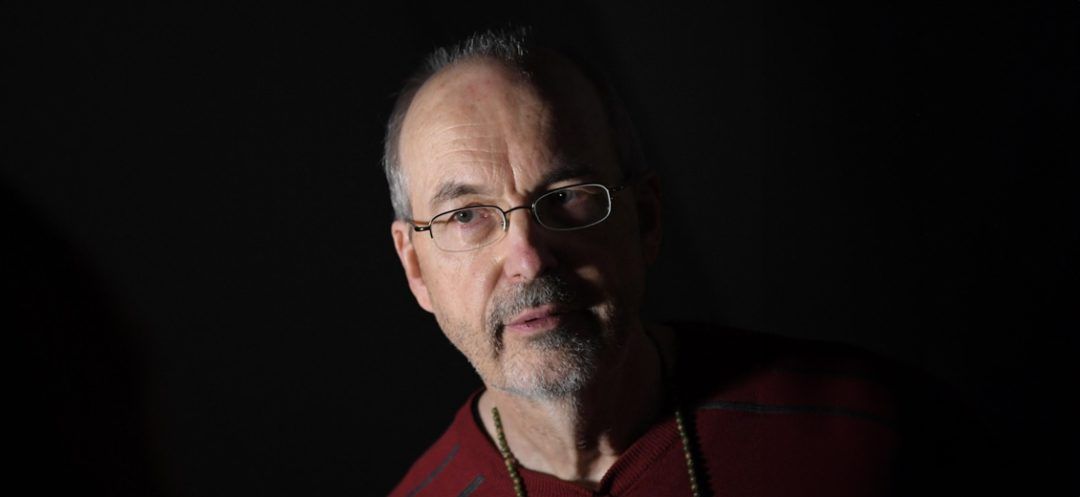
Bill Viola, the pioneering video artist known for his emotionally charged installations, died at 73, leaving behind a legacy that profoundly influenced contemporary art and redefined the medium's potential.
Bill Viola, the visionary American artist who transformed video into a medium of profound emotional and spiritual expression, passed away on July 12, 2024, at his home in Long Beach, California. He was 73 years old and had been living with Alzheimer’s disease since 2012. Viola’s groundbreaking oeuvre, spanning over four decades, left an indelible mark on the landscape of contemporary art.
He was born in New York in 1951. Viola’s artistic journey began at Syracuse University, where he studied painting and electronic music. It was during these formative years that he developed a deep fascination with mysticism and the nascent field of video art. This unique confluence of interests would become the cornerstone of his creative vision, propelling him to the forefront of the medium.
Drawing inspiration from a rich tapestry of sources, including Renaissance masters, Francisco Goya, Hieronymus Bosch and the ancient Egyptian Book of the Dead, Viola sought to capture the essence of human experience through the lens of video. As his wife and long-time collaborator Kira Perov noted, “Bill was greatly influenced by the extreme emotions experienced in these beautiful Renaissance paintings. It spoke of grief, of mourning, and it really shaped his work.”
Viola’s innovative approach to video art centered on the concept of “sculpting time.” By employing slow-motion techniques and minimizing the use of special effects, he crafted immersive installations that invited viewers to contemplate the nature of existence, perception and consciousness. His work transcended the boundaries of traditional art spaces, captivating audiences in prestigious institutions worldwide.
In 2014, the Grand Palais in Paris hosted Viola’s first retrospective in France, showcasing the breadth and depth of his illustrious career. This landmark exhibition solidified his status as one of the most celebrated pioneers of video art, cementing his legacy in the annals of art history.
Viola’s artistic vision also extended to the realm of opera, where his groundbreaking collaboration with director Peter Sellars on Wagner’s Tristan und Isolde at the Paris Opera in 2005 redefined the possibilities of the art form. By seamlessly integrating his hypnotic video art with live performance, Viola created a “total work of art” that continues to captivate audiences to this day. The Paris Opera paid tribute to Viola’s contribution, describing the production as “hypnotic, haunting, radical” and one that “will never cease to fascinate us.”
As news of Viola’s passing reverberates through the art world, tributes pour in from artists, curators and institutions across the globe. His unique ability to harness the power of video technology in service of profound emotional and spiritual experiences set him apart from his contemporaries, inspiring generations of artists to explore the medium’s potential for self-expression.
Beyond his groundbreaking installations and collaborations, Viola’s true legacy lies in his unwavering commitment to exploring the human condition through art. By challenging viewers to confront the most profound aspects of existence, he elevated video art from a niche medium to a powerful tool for introspection and understanding.
Although the art world mourns the loss of this visionary artist, Bill Viola’s work endures as a testament to the transformative power of art. His passing marks the end of an era, but the impact of his artistic vision will continue to resonate, inspiring and provoking thought for generations to come. In the words of the artist himself, “Art is a means of transformation, a way of changing the way we see and understand the world.” Bill Viola’s life and work stand as a shining embodiment of this truth.
With AFP
Bill Viola, the visionary American artist who transformed video into a medium of profound emotional and spiritual expression, passed away on July 12, 2024, at his home in Long Beach, California. He was 73 years old and had been living with Alzheimer’s disease since 2012. Viola’s groundbreaking oeuvre, spanning over four decades, left an indelible mark on the landscape of contemporary art.
He was born in New York in 1951. Viola’s artistic journey began at Syracuse University, where he studied painting and electronic music. It was during these formative years that he developed a deep fascination with mysticism and the nascent field of video art. This unique confluence of interests would become the cornerstone of his creative vision, propelling him to the forefront of the medium.
Drawing inspiration from a rich tapestry of sources, including Renaissance masters, Francisco Goya, Hieronymus Bosch and the ancient Egyptian Book of the Dead, Viola sought to capture the essence of human experience through the lens of video. As his wife and long-time collaborator Kira Perov noted, “Bill was greatly influenced by the extreme emotions experienced in these beautiful Renaissance paintings. It spoke of grief, of mourning, and it really shaped his work.”
Viola’s innovative approach to video art centered on the concept of “sculpting time.” By employing slow-motion techniques and minimizing the use of special effects, he crafted immersive installations that invited viewers to contemplate the nature of existence, perception and consciousness. His work transcended the boundaries of traditional art spaces, captivating audiences in prestigious institutions worldwide.
In 2014, the Grand Palais in Paris hosted Viola’s first retrospective in France, showcasing the breadth and depth of his illustrious career. This landmark exhibition solidified his status as one of the most celebrated pioneers of video art, cementing his legacy in the annals of art history.
Viola’s artistic vision also extended to the realm of opera, where his groundbreaking collaboration with director Peter Sellars on Wagner’s Tristan und Isolde at the Paris Opera in 2005 redefined the possibilities of the art form. By seamlessly integrating his hypnotic video art with live performance, Viola created a “total work of art” that continues to captivate audiences to this day. The Paris Opera paid tribute to Viola’s contribution, describing the production as “hypnotic, haunting, radical” and one that “will never cease to fascinate us.”
As news of Viola’s passing reverberates through the art world, tributes pour in from artists, curators and institutions across the globe. His unique ability to harness the power of video technology in service of profound emotional and spiritual experiences set him apart from his contemporaries, inspiring generations of artists to explore the medium’s potential for self-expression.
Beyond his groundbreaking installations and collaborations, Viola’s true legacy lies in his unwavering commitment to exploring the human condition through art. By challenging viewers to confront the most profound aspects of existence, he elevated video art from a niche medium to a powerful tool for introspection and understanding.
Although the art world mourns the loss of this visionary artist, Bill Viola’s work endures as a testament to the transformative power of art. His passing marks the end of an era, but the impact of his artistic vision will continue to resonate, inspiring and provoking thought for generations to come. In the words of the artist himself, “Art is a means of transformation, a way of changing the way we see and understand the world.” Bill Viola’s life and work stand as a shining embodiment of this truth.
With AFP
Read more



Comments